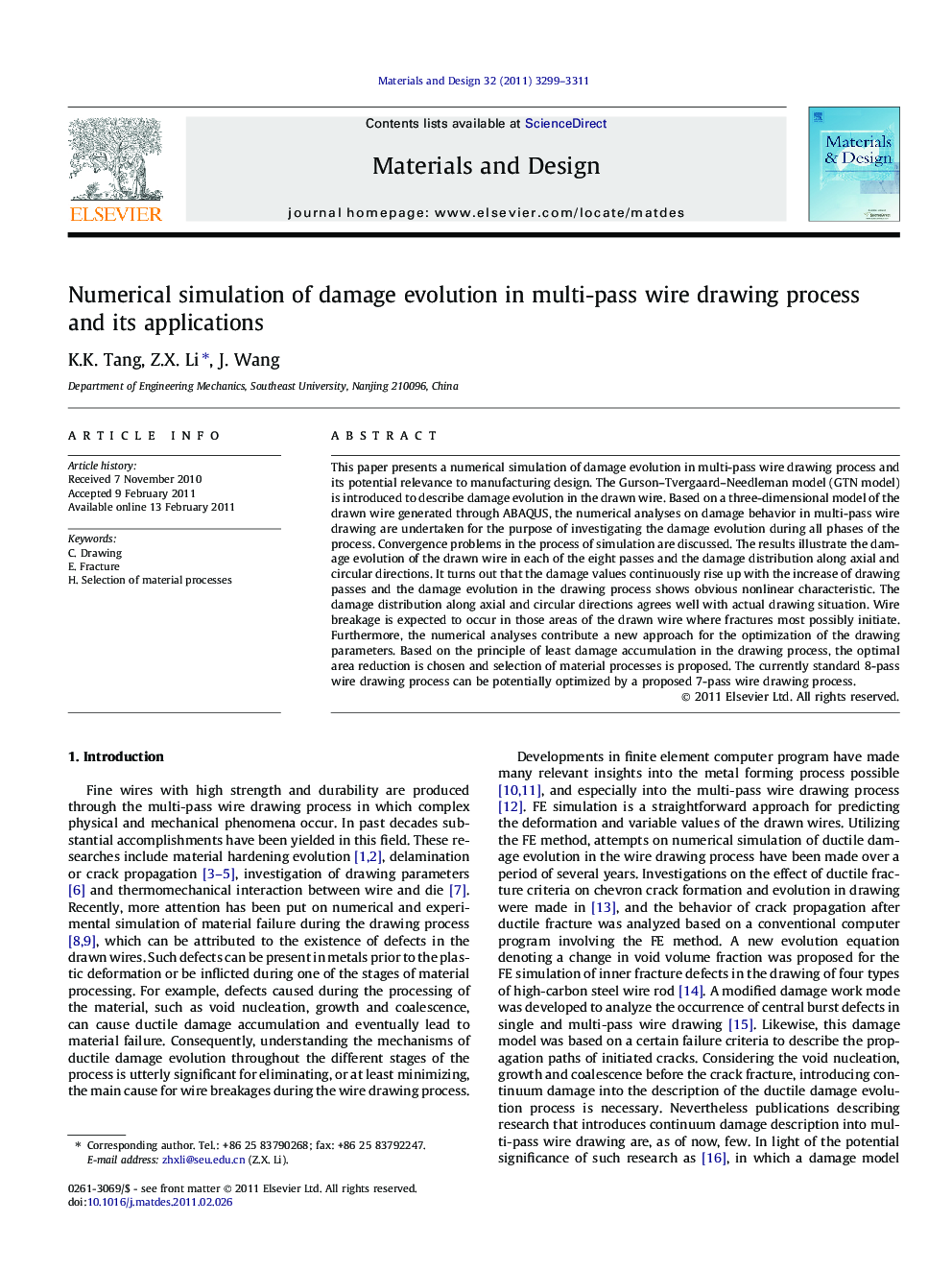| Article ID | Journal | Published Year | Pages | File Type |
|---|---|---|---|---|
| 831642 | Materials & Design (1980-2015) | 2011 | 13 Pages |
This paper presents a numerical simulation of damage evolution in multi-pass wire drawing process and its potential relevance to manufacturing design. The Gurson–Tvergaard–Needleman model (GTN model) is introduced to describe damage evolution in the drawn wire. Based on a three-dimensional model of the drawn wire generated through ABAQUS, the numerical analyses on damage behavior in multi-pass wire drawing are undertaken for the purpose of investigating the damage evolution during all phases of the process. Convergence problems in the process of simulation are discussed. The results illustrate the damage evolution of the drawn wire in each of the eight passes and the damage distribution along axial and circular directions. It turns out that the damage values continuously rise up with the increase of drawing passes and the damage evolution in the drawing process shows obvious nonlinear characteristic. The damage distribution along axial and circular directions agrees well with actual drawing situation. Wire breakage is expected to occur in those areas of the drawn wire where fractures most possibly initiate. Furthermore, the numerical analyses contribute a new approach for the optimization of the drawing parameters. Based on the principle of least damage accumulation in the drawing process, the optimal area reduction is chosen and selection of material processes is proposed. The currently standard 8-pass wire drawing process can be potentially optimized by a proposed 7-pass wire drawing process.
► Computational issues in the modeling of damage behavior in the drawn wire are discussed. ► Numerical results present the damage evolution of the drawn wire in each of eight passes. ► Optimization of drawing parameters is proposed, e. g. optimal area reduction and 7-pass process.
